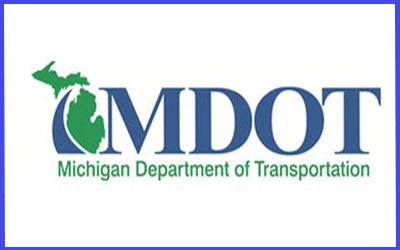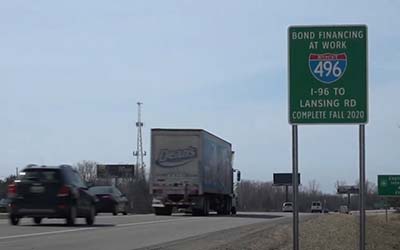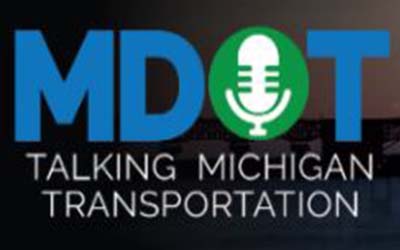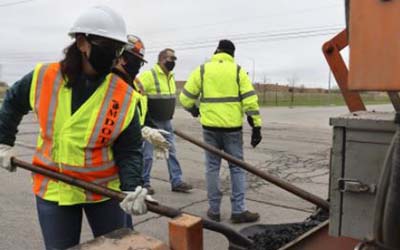
Students Get Moving on Bike to School Day
Sharing on behalf of the Michigan Fitness Foundation. |

Sharing on behalf of the Michigan Fitness Foundation. |

FOR IMMEDIATE RELEASE CONTACT: Courtney Bates, MDOT Office of Communications, 517-242-0950, [email protected] National Work Zone Awareness Week: Fast facts:
April 26, 2021 — Fall 2020 was a time of tragedy for Michigan’s road and bridge workers. In a matter of three months, five road workers had been struck and killed and three more injured in work zone crashes. As the Michigan Department of Transportation (MDOT) and other road agencies around the state begin another season of rebuilding and maintaining Michigan’s roads and bridges, it is critical that drivers, passengers, and workers take work zone safety seriously. In 2020, preliminary work zone crash information shows that there were:
Michigan is hosting National Work Zone Awareness Week (NWZAW), the annual spring campaign to encourage safe driving through work zones, being held April 26-30. This year’s theme, “Drive Safe. Work Safe. Save Lives,” emphasizes the importance of driving safely and workers making safety a priority to ensure that we all work together to save lives in work zones. A media event will be held on April 27, featuring transportation, safety, and government officials from across the country. Watch it live on MDOT’s Livestream channel at https://livestream.com/mdot/ As Gov. Gretchen Whitmer’s $3.5 billion Rebuilding Michigan program gets underway, major work will be happening on some of the state’s most vital freeways and bridges over the next few years. Motorists are urged to think about the people doing that work and the risks they face when drivers speed through work zones. “As we deliver on the promise to fix Michigan’s roads and bridges, the safety of our road workers is our priority,” said Gov. Whitmer. “Michigan’s road workers should be able to safely do their jobs without fear of a crash. We can all help by committing to slowing down and paying attention in work zones as the construction season gets under way.” “The number one safety feature in any vehicle is the driver,” said State Transportation Director Paul C. Ajegba. “Lives can be saved and tragedies avoided if rules are followed and focus is maintained at all times, but we all need to work together.” To show your support for the safety of road workers and everyone on the road, MDOT and its statewide safety partners are asking you to “Go Orange” this Wednesday, April 28. At home or in the field, show your support by sharing a photo on social media of you or your team wearing orange, including the hashtags #Orange4Safety and #NWZAW. MDOT reminds everyone to know before you go. Check www.Michigan.gov/Drive Since 2000, NWZAW is part of the Toward Zero Deaths (TZD) national safety campaign, a vision of eliminating fatalities on our nation’s roads. |


FOR IMMEDIATE RELEASE
Video: Rebuilding Michigan Bond Funds in Action
LANSING, Mich. — With road and bridge projects getting underway across the state, a new Michigan Department of Transportation (MDOT) video highlights how Go
“This Rebuilding Michigan bond program is really going to impact and improve the quality of people’s lives across Michigan,” Gov. Whitmer said at a recent visit to the completed I-496 rebuilding project between I-96 and Lansing Road in Eaton and Ingham counties.
“I think the governor is right,” added State Transportation Director Paul C. Ajegba. “This year is going to be the most we’ve ever spent on infrastructure in the state of Michigan’s history.”
Thanks to the $3.5 billion raised through the sale of Rebuilding Michigan bonds, additional funding will be available over the next four years to rebuild critical roads and bridges in Michigan that otherwise would not have been addressed for years due to limited resources. In addition, projects originally scheduled by MDOT to resurface or otherwise repair roads and bridges will now be upgraded to be full rebuilding projects, lasting much longer and providing more value for taxpayer dollars. This bond funding will also free up funding to invest in other MDOT projects as well.
“These can actually be, rather than patch jobs and kind of papering over things, real road reconstruction,” said Lt. Gov. Garlin Gilchrist. “This is really a matter of public safety.”
Among the projects highlighted in the video: – I-69 in St. Clair, Genesee, Clinton, Eaton, and Calhoun counties, – I-75 in Monroe County, – I-496 in Ingham County, – I-94 in Jackson County, and – I-196 in Allegan County.
As the governor stated in her State of the State address in January 2020 announcing the Rebuilding Michigan program, “From now on, when you see orange barrels on a state road, slow down and know that it’s this administration fixing the damn roads.” |

FOR IMMEDIATE RELEASE THURSDAY, APRIL 22, 2021 CONTACT: Chelsea Wuth, MDHHS, 517-241-2112 MDHHS launches pilot Travel Points Testing at April 22, 2021 — In an attempt to mitigate the spread of COVID-19, the Michigan Department of Health and Human Services (MDHHS), in partnership with the Michigan Department of Transportation (MDOT) and select Michigan airports, are piloting a Travel Points Testing program this spring – bringing antigen COVID-19 testing to locations with high volumes of travel. Quick and cost-free testing will be offered at several Michigan Welcome Centers and airports throughout the state, with results available in as little as 15 minutes. Walk-ups are taken as space allows, and an option to register online via a mobile device will also be available. “As we head into the summer with vaccines ramping up and a light at the end of the tunnel, I am so proud of this partnership between MDOT and MDHHS to keep Michiganders safe,” said Gov. Gretchen Whitmer. “I encourage all Michiganders to continue masking up, socially distancing and hand washing to slow the spread, and if you re-enter or travel across the state, get tested at one of the new sites being set up at key points. Finally, I encourage you to get vaccinated, which is the most effective way to keep you and your family safe and put this pandemic behind us.” “We are excited to provide space at our select Welcome Centers for immediate COVID-19 testing,” said State Transportation Director Paul C. Ajegba. “Our Welcome Centers are a gateway to thousands of travelers coming into the state each day, making them ideal locations to help prevent the spread of this horrible virus. Just look out for the COVID testing signs before the appropriate centers along the freeways.” Insurance is not required, and results can be obtained via text, e-mail or uploaded to the traveler’s patient portal. “We are pleased to partner with MDOT and offer simple, quick COVID-19 testing for Michiganders and travelers to Michigan,” said Dr. Joneigh Khaldun, chief medical executive and chief deputy for health at the MDHHS. “With growing concerns of new, more contagious variants, testing for COVID-19 is more important than ever. If you are engaging in any travel, we encourage you to take advantage of this testing when you re-enter or travel across the state.” Testing trailers will be located on the grounds of Michigan Welcome Centers. Testing stations will be located at multiple locations inside Michigan airports. Welcome Centers (open daily Monday-Sunday 10 a.m. to 5 p.m.):
Airport:
“Testing sites are widely available at MDOT Welcome Centers and airports for the convenience of the traveler, and we have created resources for travelers to journey safely. To learn more about the Pure Michigan Pledge and to view resources, visit our state travel office website,” said Larisa Draves, executive director, Michigan Association of Convention and Visitor Bureaus. Additional sites will be announced as they are confirmed. To learn more about coronavirus and related resources in Michigan, visit Michigan.gov/Coronavirus. To learn more about the Centers for Disease Control and Prevention’s guidance on travel and additional safety measures, visit CDC.gov. |

|


|